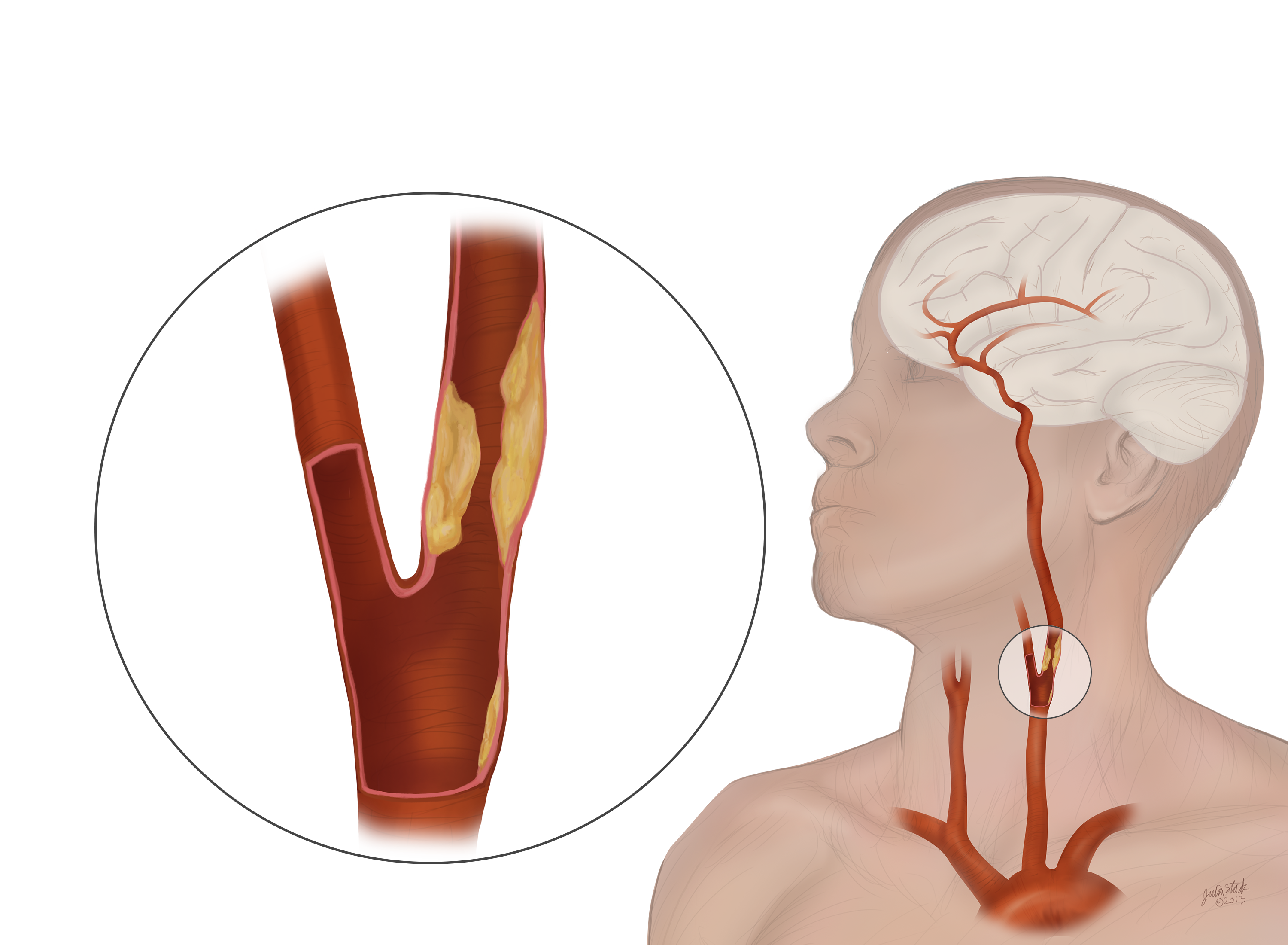Carotid artery disease is a form of atherosclerosis, or a buildup of plaque, of the main arteries in the neck that supply oxygen-rich blood to the brain. This plaque is estimated to be the source of stroke in up to one-third of individuals, with 427,000 new diagnoses of stroke every year in the U.S.
TransCarotid Artery Revascularization (TCAR) is an important new option in the fight against stroke, and is particularly suited for those patients who are at higher risk of complications from carotid surgery due to age, anatomy, or other medical conditions. Because of its low stroke risk and faster patient recovery, TCAR represents the future of carotid repair. In fact, The Cardiovascular Care Group, which prides itself on the use of cutting-edge medical technologies, is the first practice in New Jersey to perform this procedure.
Pre-TCAR
Prior to TCAR, the main treatment option for severe carotid artery disease was an open surgical procedure called carotid endarterectomy (CEA). Some individuals can manage carotid artery disease with medications and lifestyle change. However, more severe cases may require surgery to repair the blockage in the artery.
CEA removes plaque from inside the carotid artery restoring normal blood flow to the brain, but the incision leaves a visible scar on the neck.
How Safe is TCAR?
Over 10,000 TCAR procedures have been performed worldwide. TCAR has been studied extensively, and the clinical data have been excellent.
TCAR procedures for symptomatic and asymptomatic patients at high risk for surgery are now supported by Medicare through the Society of Vascular Surgery sponsored TCAR Surveillance Project. This program is part of the Vascular Quality Initiative, an open registry that tracks long-term clinical outcomes to promote best practices and evidence-based medicine.
What Happens During a TCAR Procedure?
A small incision is made at the base of the neck, just above the collarbone. A puncture is made into the carotid artery and a small tube is placed inside the artery, which is connected to the system that temporarily directs blood flow away from the brain and captures any dangerous bits of plaque that could potentially break off from the artery. The blood is then filtered and returned to a vein through a second tube placed in the groin. While the brain is protected during this temporary flow reversal, a stent is placed in the carotid artery to stabilize the plaque and is intended to help prevent against future stroke. The blood flow is then returned to normal and the system is removed.
The entire procedure usually takes less than one hour. Patients can be either asleep or awake during the TCAR procedure and patients are typically observed overnight.
Based on published clinical trials, the procedure offers several advantages:
- Better outcomes: TCAR results in a low stroke rate (1.4%) in high surgical risk patients. This compares favorably to a 2.3% stroke rate of carotid endarterectomy and a 4.1% stroke rate of carotid artery stenting from a trans-femoral approach in standard risk patients. This is the lowest reported to date for any prospective, multi-center trial of carotid stenting.
- Less invasive: The TCAR approach allows for low rates of other complications such as nerve injury or heart attack.
- Patient friendly: Local anesthesia is favored, and hospital stays are typically overnight for observation. TCAR patients recover quickly and almost always go home the next day to return to full and productive lives with less pain and smaller scars.
While CEA is recognized as a safe, effective surgery, it is still a fairly major surgery that typically takes 1-3 hours and often requires general anesthesia. TCAR is an important new option in the fight against stroke and is particularly suited for those patients who are at higher risk of complications from carotid surgery due to age, other medical conditions or anatomic issues.
To learn more about TCAR and our successful TCAR procedures, please schedule an appointment with one of our board-certified vascular surgeons.








.jpg?width=944&name=Castle-Connolly-Top-Doctors-Emblem-Large%20(4).jpg)